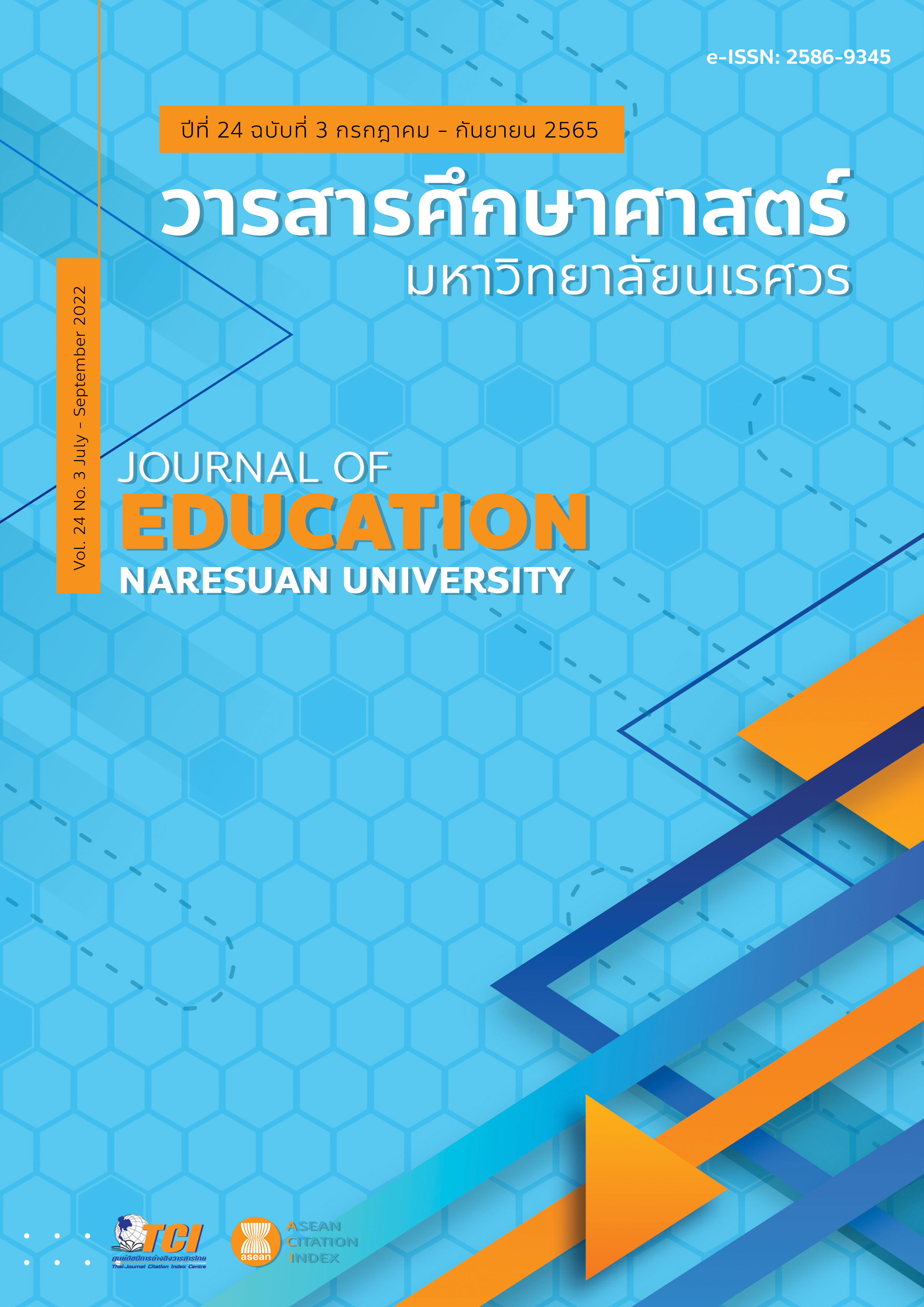INTEGRATION MANAGEMENT OF LEARNING AND TEACHING USING PROJECT-BASED DAPOA MODEL FOR HIGH FREQUENCY ELECTRONIC CIRCUIT TECHNOLOGY EDUCATION การจัดการเรียนการสอนแบบบูรณาการโดยใช้โครงงานเป็นฐานแบบ DAPOA สำหรับการเรียนรู้ด้านเทคโนโลยีวงจรอิเล็กทรอนิกส์ความถี่สูง
Main Article Content
Abstract
The research paper presents the integration management of learning and teaching using project-based DAPOA model for high frequency circuit technology education. The conceptual framework of the research is the management integration between the project-based learning model, constructionism and constructivism’s theory and to be a guideline for developing DAPOA project-based learning and teaching model. The developed DAPOA model consists of 5 processes as: 1) determination 2) analysis, 3) planning and design, 4) operation, and 5) assessment. The research tools include the developed DAPOA model, integration management of teaching activities, instructional package of high frequency circuit technology, quality and satisfaction assessment form. The research results shown that the appropriation of the developed DAPOA learning and teaching model is at a high level (mean equaled to 4.30) and efficiency of instructional package was agreement to the standard criteria of efficiency’s Meguigans (equaled to 1.10). The students’ learning achievement using the DAPOA learning and teaching model is higher than normal classroom with statistical significance at .05, the learners’ satisfaction was at high level (mean equaled to 4.47). In conclusion, the integration management of learning and teaching using project-based DAPOA model can encourage learners to be able practicing in real work, to have good collaboration with others, to enhance research skills, presentation and self-learning, including to apply knowledge in building innovations for country development as effectively.
Article Details

This work is licensed under a Creative Commons Attribution-NonCommercial-NoDerivatives 4.0 International License.
The owner of the article does not copy or violate any of its copyright. If any copyright infringement occurs or prosecution, in any case, the Editorial Board is not involved in all the rights to the owner of the article to be performed.
References
Bellanca, J. A. (2011). 21st century skills: Rethinking how students learn. United States: Solution Tree Press.
Division of Research Administration and Educational Quality Assurance. (2017). Thailand 4.0 model drive of Thailand towards stability, wealth and sustainable. Bangkok: Division of Research Administration and Educational Quality Assurance. [in Thai]
Fernando, Sithara Y. J. N., & Marikar, Faiz M. M. T. (2017). Constructivist teaching/learning theory and participatory teaching methods. Journal of Curriculum and Teaching, 6(1), 110-122.
Gifkins J. (2015). What is ‘active learning’ and why is it important? Retrieved December 23, 2019, from https://www.e-ir.info/2015/10/08/what-is-active-learning-and-why-is-it-important/
Jeenawong, R. (2013). The development of project-based instruction on microwave antenna for undergraduate education in telecommunication engineering (Doctoral dissertation). Bangkok: King Mongkut’s University of Technology North Bangkok. [in Thai]
Klinbumrung, K., Jeenawong, R., & Akatimagool, S. (2017). The STEM learning process using REPEA model for transmission line engineering course. The 5th International Conference on Technical Education (ICTeched 5), November 23, 2017. Bangkok: King Mongkut’s University of Technology North Bangkok.
Maneewan, D., Nuangpirom, P., & Ruangsiri, K. (2017). The development of GUI-MATLAB based simulation program for principle of communication system course. The 2nd International STEM Education Conference. July 12-14, 2017. Chiang Mai: Rajamangala University of Technology Lanna (RMUTL).
Office of the Higher Education Commission. (2018). Announcement of guidelines for compliance with the national higher education qualifications framework for digital competency for undergraduate qualifications. Bangkok: Office of the Higher Education Commission. [in Thai]
Office of the National Economic and Social Development Council. (2019). The twelfth plan (2017-2021). Retrieved December 17, 2019, from https://www.nesdb.go.th/ [in Thai]
Qamar, S. Z., Kamanathan, A., & Al-Rawahi, N. Z. (2016). Teaching product design in line with Bloom's taxonomy and ABET student outcomes, IEEE Global Engineering Education Conference (EDUCON 2016), April 10-13, 2016. Abu Dhabi: UAE.
Rodríguez, J. (2015). Project based learning experiences in the space engineering education at Technical University of Madrid. Advances in Space Research, 56(7), 1319-1330.


